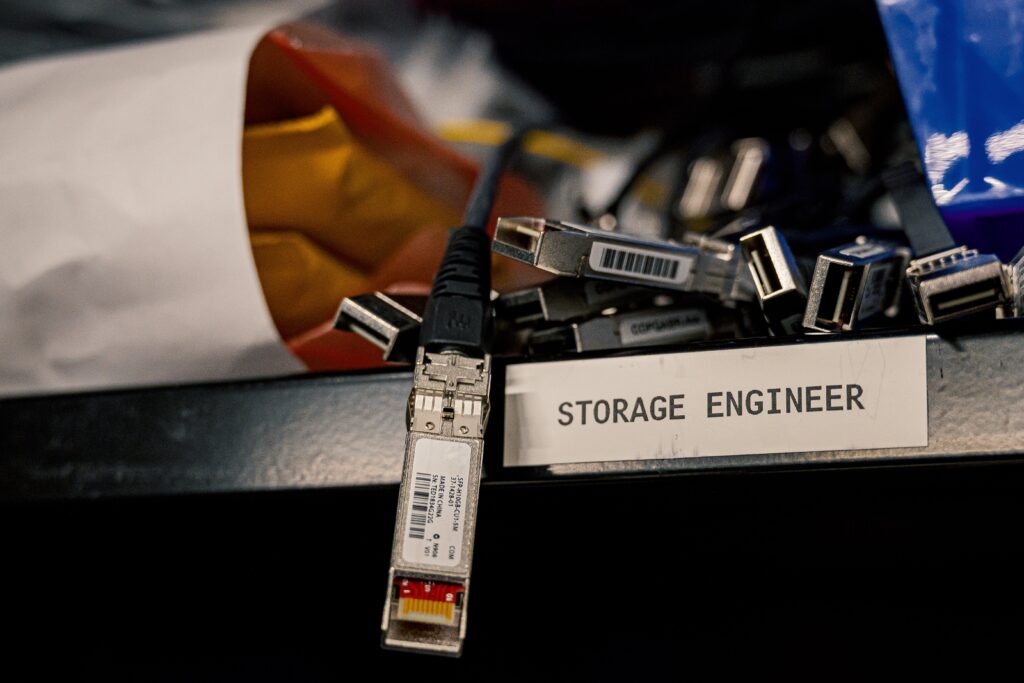In the interconnected landscape of the digital world, the specter of data breaches looms large, raising questions about responsibility and accountability. Understanding who is responsible for data breaches is crucial in navigating the complexities of our online interactions. In this simple guide, we’ll unravel the layers of responsibility and shed light on the key players involved.

What is a Data Breach?
Before delving into responsibility, it’s essential to understand what constitutes a data breach. A data breach occurs when unauthorized individuals gain access to sensitive information. This can include personal data like names, addresses, and financial details, as well as business-related information such as client databases and proprietary data.
Key Players in Data Breaches:
1. Cybercriminals: The primary perpetrators of data breaches are cybercriminals. These individuals or groups employ various tactics, including hacking, phishing, and malware, to exploit vulnerabilities and gain unauthorized access to sensitive information.
2. Organizations and Businesses: Organizations and businesses that collect and store personal or sensitive information bear a significant responsibility for data breaches. They must implement robust cybersecurity measures, maintain secure systems, and prioritize the protection of the data entrusted to them.
3. Individuals: While individuals may not be directly responsible for orchestrating data breaches, their actions can contribute to vulnerabilities. Weak password practices, falling for phishing attacks, and neglecting basic cybersecurity hygiene can inadvertently open doors for cybercriminals.
4. Service Providers and Third Parties: Many organizations rely on service providers and third-party vendors to handle certain aspects of their operations, including data management. These entities share a responsibility for data breaches and must uphold rigorous security standards to prevent unauthorized access.
Why Organizations and Businesses Are Responsible:
1. Custodians of Sensitive Information: Organizations and businesses are the custodians of vast amounts of sensitive information. Whether it’s customer data, financial records, or proprietary business information, they hold a duty to safeguard this data from unauthorized access.
2. Legal and Regulatory Obligations: Various laws and regulations, such as the General Data Protection Regulation (GDPR) and the Health Insurance Portability and Accountability Act (HIPAA), impose legal obligations on organizations to protect the privacy and security of individuals’ data. Failure to comply can result in legal consequences and financial penalties.
3. Duty to Implement Cybersecurity Measures: Organizations have a duty to implement robust cybersecurity measures to prevent data breaches. This includes regularly updating software, encrypting sensitive data, conducting security audits, and providing ongoing employee training to mitigate human error.
4. Rebuilding Trust After a Breach: When a data breach occurs, organizations bear the responsibility of rebuilding trust with their customers and stakeholders. This involves transparent communication about the breach, taking swift corrective actions, and implementing measures to prevent future incidents.
Why Individuals Play a Role in Data Breaches:
1. Weak Password Practices: Individuals who use weak or easily guessable passwords contribute to the risk of data breaches. Passwords like “123456” or “password” are easily cracked, providing cybercriminals with an entry point.
2. Falling for Phishing Attacks: Phishing attacks rely on tricking individuals into revealing sensitive information. If individuals are not vigilant and fall victim to phishing attempts, they inadvertently contribute to the success of these attacks.
3. Neglecting Cybersecurity Hygiene: Basic cybersecurity hygiene, such as keeping software updated, using secure Wi-Fi networks, and being cautious about clicking on suspicious links, plays a crucial role in preventing data breaches. Neglecting these practices can expose individuals to cyber threats.
4. Using Unsecured Networks: Individuals who use unsecured public Wi-Fi networks without taking precautions may inadvertently expose their data to interception. Cybercriminals can exploit vulnerabilities in unsecured networks to gain unauthorized access.
Why Service Providers and Third Parties Are Responsible:
1. Handling Sensitive Information: Service providers and third parties often handle sensitive information on behalf of organizations. Whether it’s cloud service providers or vendors processing financial transactions, they share a responsibility to uphold stringent security measures.
2. Implementing Robust Security Protocols: Service providers and third parties must implement and maintain robust security protocols. This includes encryption of transmitted data, secure storage practices, and regular security audits to identify and address potential vulnerabilities.
3. Supply Chain Security: Organizations rely on a complex web of suppliers, vendors, and partners. Each entity within this supply chain must prioritize security to prevent potential breaches that could have cascading effects.
Practical Steps for Prevention and Accountability:
1. Organizations and Businesses:
- Implement strong cybersecurity measures, including firewalls, antivirus software, and regular security audits.
- Educate and train employees on cybersecurity best practices.
- Encrypt sensitive data to add an extra layer of protection.
- Regularly update software and systems to patch known vulnerabilities.
- Foster a culture of cybersecurity awareness within the organization.
2. Individuals:
- Use strong and unique passwords for each account.
- Enable Two-Factor Authentication (2FA) for an extra layer of protection.
- Be cautious of phishing attempts and verify the legitimacy of requests for personal information.
- Regularly update devices and software to patch vulnerabilities.
- Monitor financial statements for any unauthorized transactions.
3. Service Providers and Third Parties:
- Implement robust security measures, including encryption and secure storage practices.
- Conduct regular security audits to identify and address potential vulnerabilities.
- Collaborate with organizations to ensure a unified approach to cybersecurity.
- Communicate transparently with clients about security measures and protocols.
Conclusion:
In the complex web of the digital world, responsibility for data breaches is shared among various entities. Cybercriminals perpetrate these breaches, but organizations, individuals, and service providers all play crucial roles. Organizations must prioritize cybersecurity measures, individuals must adopt good digital hygiene, and service providers must uphold stringent security protocols. By understanding the shared responsibility and taking proactive steps, we can collectively contribute to a more secure and resilient digital landscape.